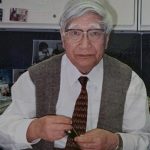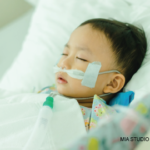The study did effectively rule out an infectious agent as the cause of KD, because of such a short incubation-to-hospital admission period, usually ranging from six hours to two days. In addition, a model fitted to the epidemiological data made it “absolutely impossible for an infection to spread among cities, even one with an incubation time of only two hours,” Dr. Rodó says. “If that were an infectious disease, it would be the fastest agent ever found,” he adds.
Unexpected Fungus Found
Although the paper did not identify the etiologic agent, it noted that when researchers took samples of the air, they unexpectedly found a variety of Candida fungus that represented 54% of all fungal strains. That result, which was consistent with a Candida animal model for KD, supports the concept of a windborne pathogen, the study argues.
The next step of the research is to try to confirm if Candida is the etiologic agent by taking more samples in different seasons. Then, more sophisticated analyses could be completed and treatments built from there, Dr. Rodó says.
“We are already working in that direction,” he says, adding in a statement to National Geographic, “It’s the most fascinating scientific problem I’ve been faced with.”4
Richard Quinn is a freelance writer in New Jersey.
References
- Kawasaki syndrome. Centers for Disease Control and Prevention. Department of Health and Human Services. http://www.cdc.gov/Kawasaki.
- Rodó X, Curcoll R, Robinson M, et al. Tropospheric winds from northeastern China carry the etiologic agent of Kawasaki disease from its source to Japan. PNAS. 2014 May 19 [Epub ahead of print]. http://www.pnas.org/content/early/2014/05/14/1400380111.
- Nierengarten MB. 2013 ACR/ARHP Annual Meeting: Diagnostic, treatment approaches evolve for Kawasaki disease. The Rheumatologist. February 2014. https://www.the-rheumatologist.org/details/article/5819541/2013_ACRARHP_Annual_Meeting_DiagnosticTreatment_Approaches_Evolve_for_Kawasaki_D.html.
- Yong E. Not exactly rocket science: The disease, my friend, is blowing in the wind. National Geographic. 2014 May 19. http://phenomena.nationalgeographic.com/2014/05/19/the-disease-my-friend-is-blowing-in-the-wind.


